In Orbetello, Virginia Overton's giant concrete tulip.
The fifth edition of the Hypermaremma contemporary art festival officially opened this morning with the unveiling of Tulip, the monumental sculptural work by artist Virginia Overton. Placed at Orbetello ’s Polveriera Guzman and facing the lagoon, Tulip (“tulip”) is a 6-meter-high concrete work punctuated by a constellation of pink glass ’little windows’. Arranged “back to back,” three vertical segments carved from pre-existing molds and typically used for the construction of large tunnels form an upright structure that opens toward the vault of heaven.
First presented at the 59th Venice Biennale, Tulip activates a new form of collaboration that aims to share important existing productions in dialogue with the Maremma landscape. Overton’s work will dialogue with the historic architecture of the Polveriera Guzman: a building constructed in 1692, during the Spanish era, by Flemish architect Ferdinand De Grunembergh. Throughout history it was used as a gunpowder store, remaining closed to the public for a long time. It is currently home to the Orbetello Archaeological Museum where Etruscan, Roman and medieval artifacts recovered from neighboring localities are preserved to tell the story of the exploits of past peoples.
Although hidden by an apparent inscrutability, the medium employed is never chosen by Virginia Overton purely for its aesthetics, but also for its history and the potential future it holds. Interested in recycling, recontextualization and repurposing, Overton often uses recycled or ready-made materials she finds in the detritus of everyday life in the urban landscape. Overton’s interest in public art originates from its symbolic function within a collective space, where her sculptures often call attention to the inexorable need for balance of size and gravity. The public is invited to move around the work and its surrounding benches without preferring a single perspective. Tulip and the Maremma landscape are meant to reflect on our territory and our community, putting them both in the foreground.
“Virginia Overton’s site - specific sculptural installations,” wrote Madeline Weisburg in the Venice Biennale catalog, "explore the unexpressed potential of objects associated with industry and infrastructure. The materials used include rope, car parts, beams, lamps, lumber, logs, concrete and the attached machinery such as cranes, pick - ups and carts that lift and move them. These materials often have performative behavior, modifying a place, obstructing, bisecting or amplifying its inherent characteristics. For The Milk of Dreams, the artist presents two sculptures at the Arsenale, the heart of Venice’s shipbuilding industry since the early 12th century. Overton installs spheres in the water reminiscent of the glass floats used by sailors to keep fishing nets, longlines and pal amiti afloat, in the bright pink tones of Venetian street lamps. Encased in hand-knotted netting, Overton’s buoys rise and fall with the tide, highlighting the variability of the lagoon. A second sculpture includes a large-scale construction in the shape of a tulip. Created from pre-existing molds usually used for architectural tunnels, three perpendicularly interlocking segments create a vertical structure punctuated by circular pink glass windows and form a triangular opening and vaulted to the sky. Additional modular elements are arranged toward the water act as benches, offering visitors a moment of rest amidst the historical layers-physical and psychological-of the Arsenal."
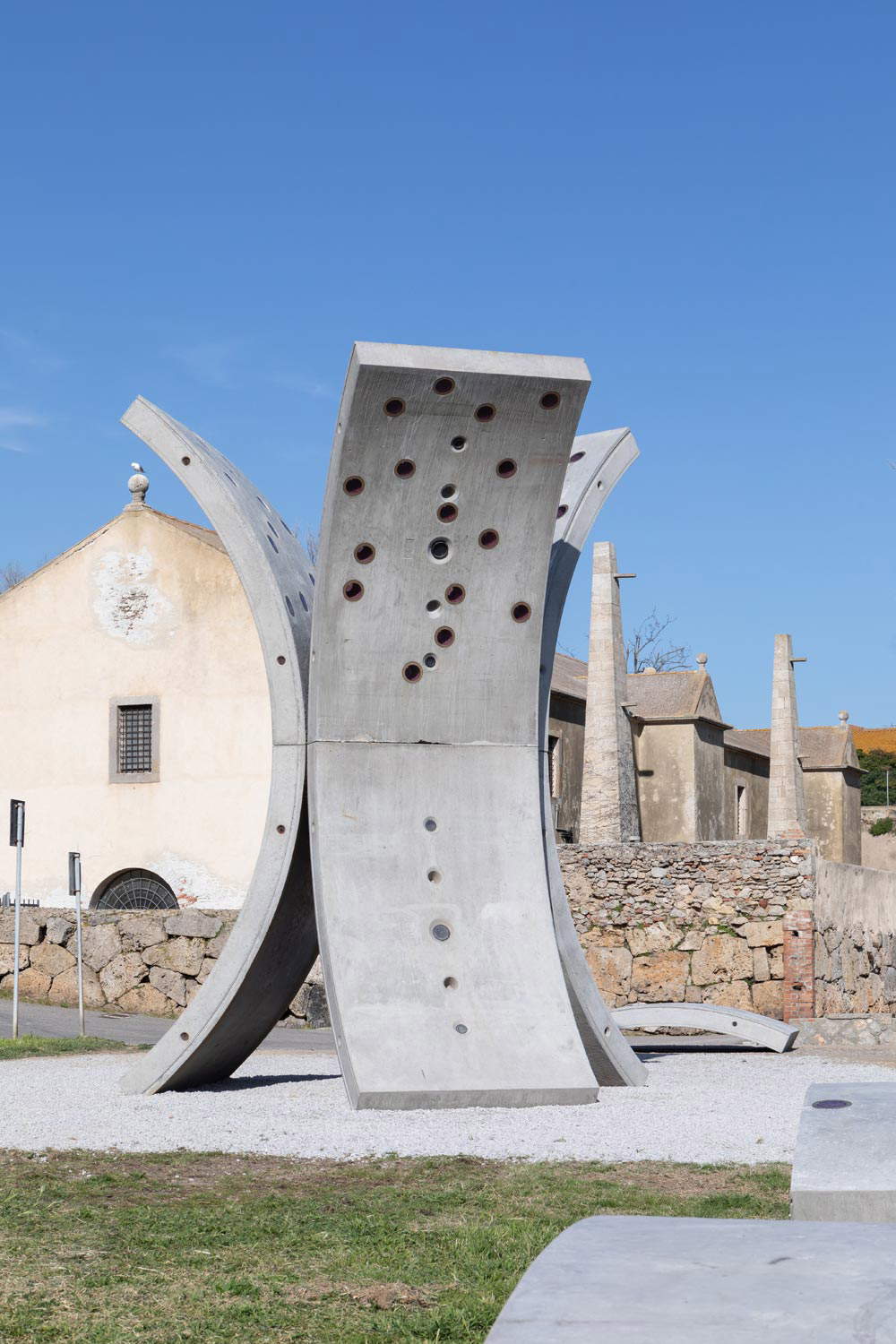
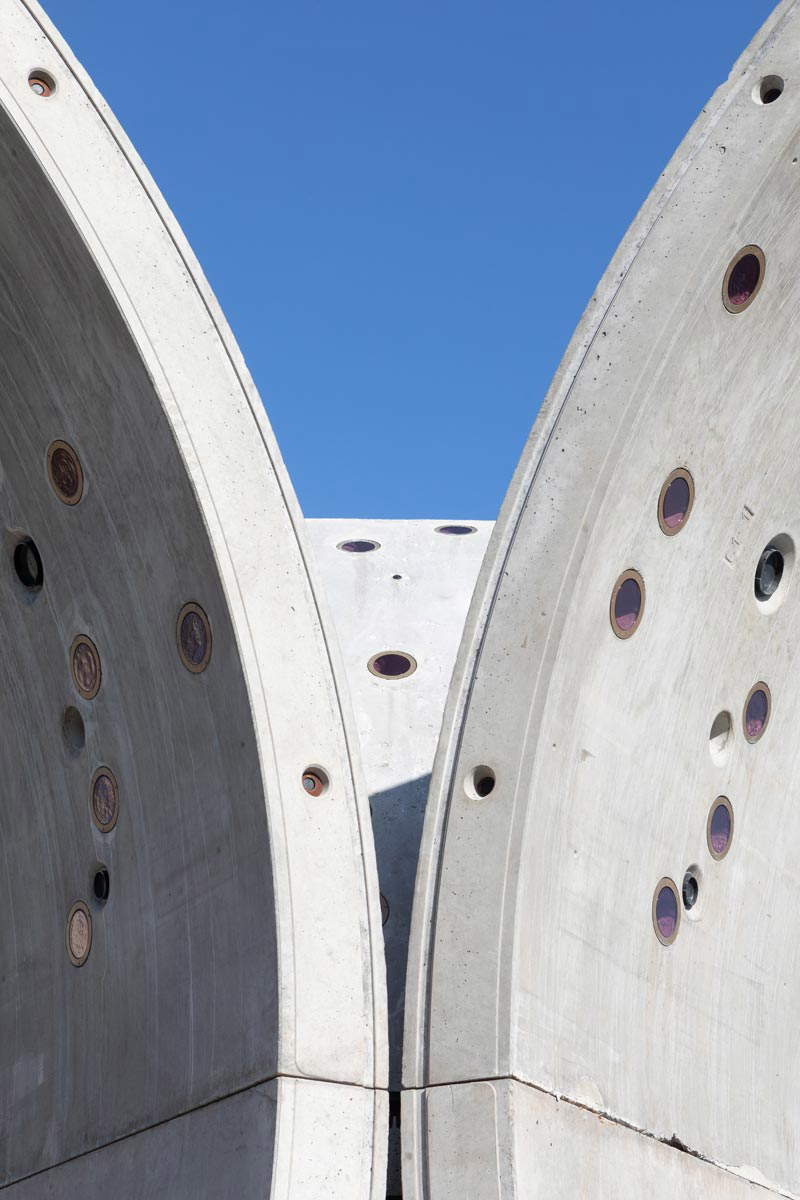
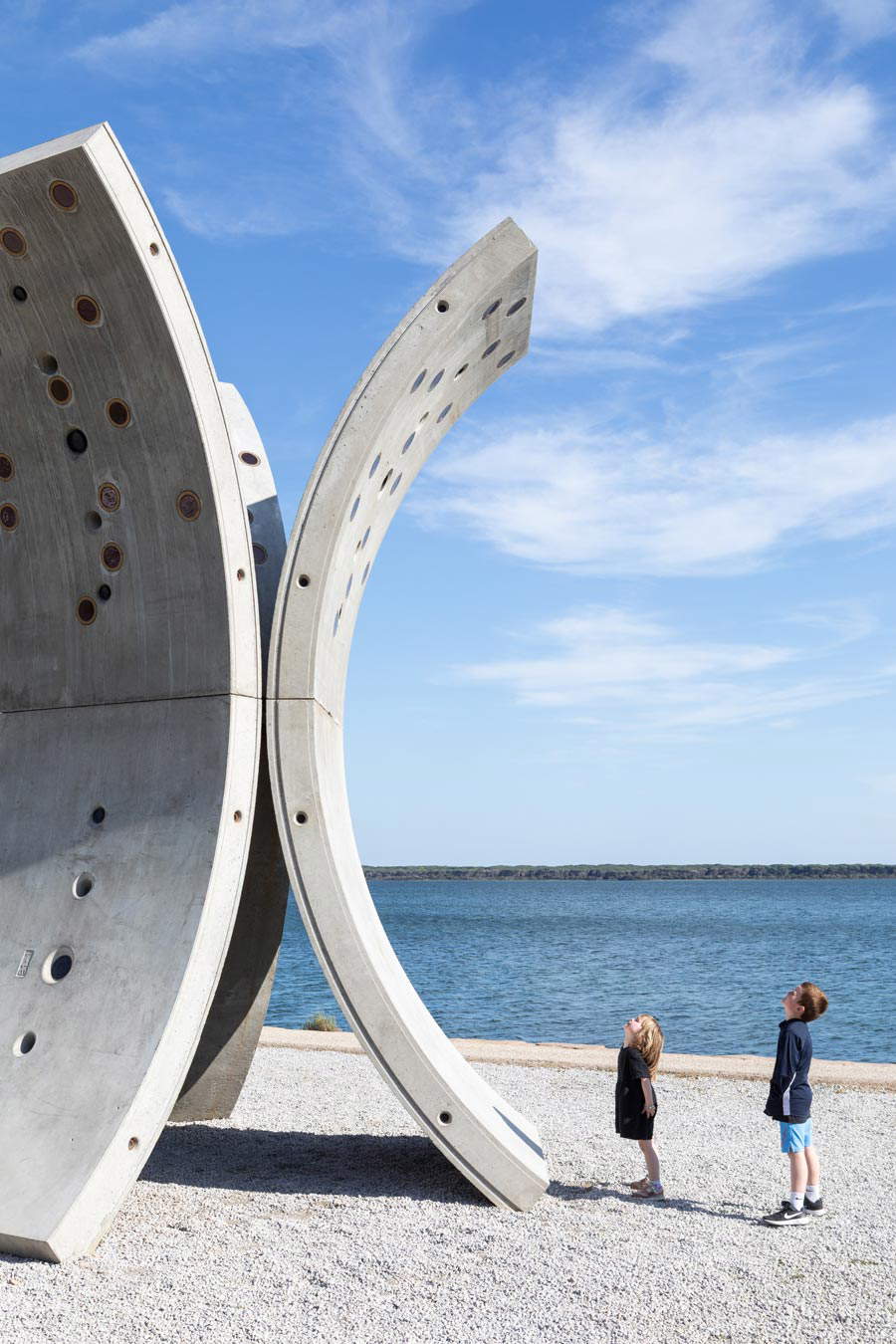
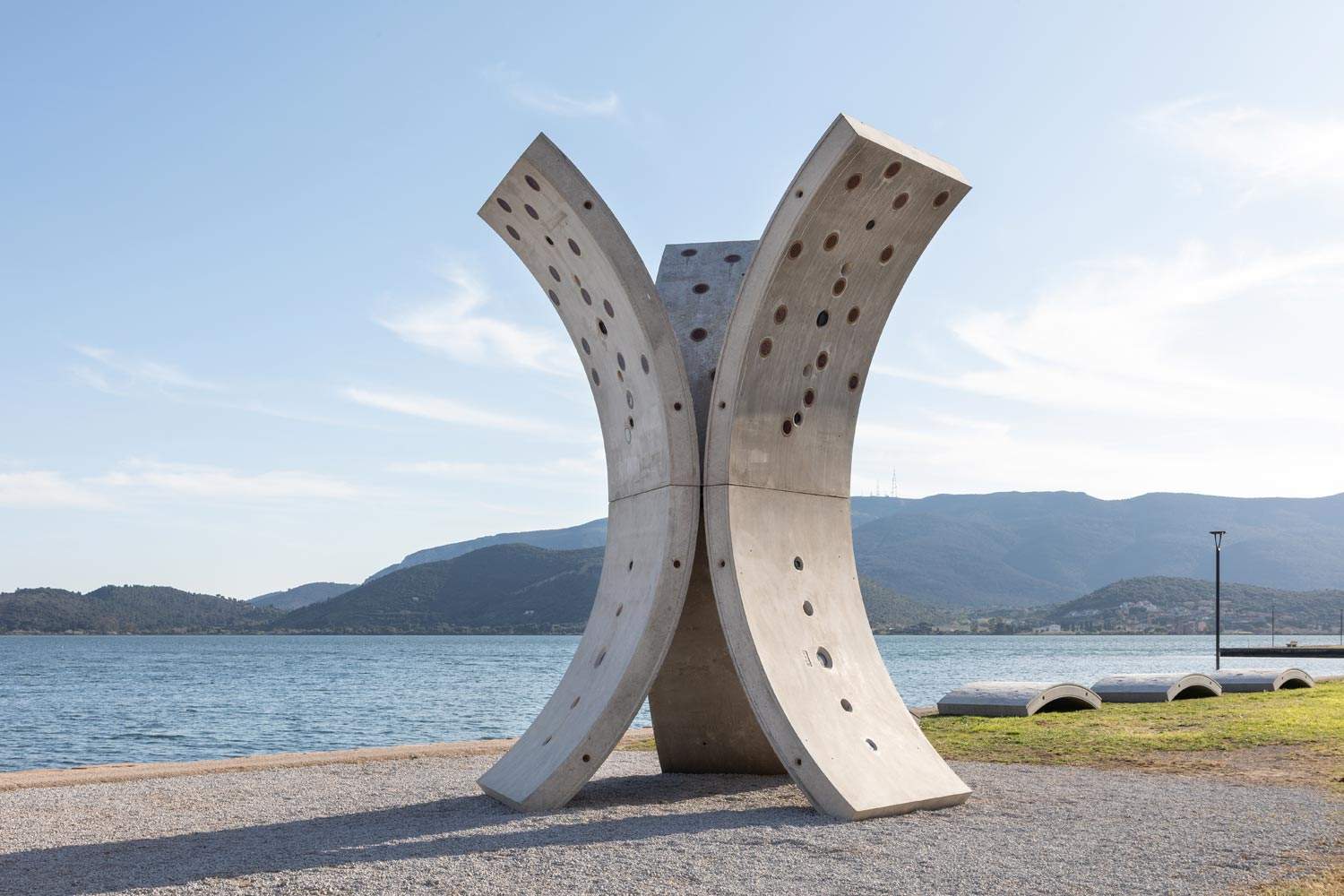
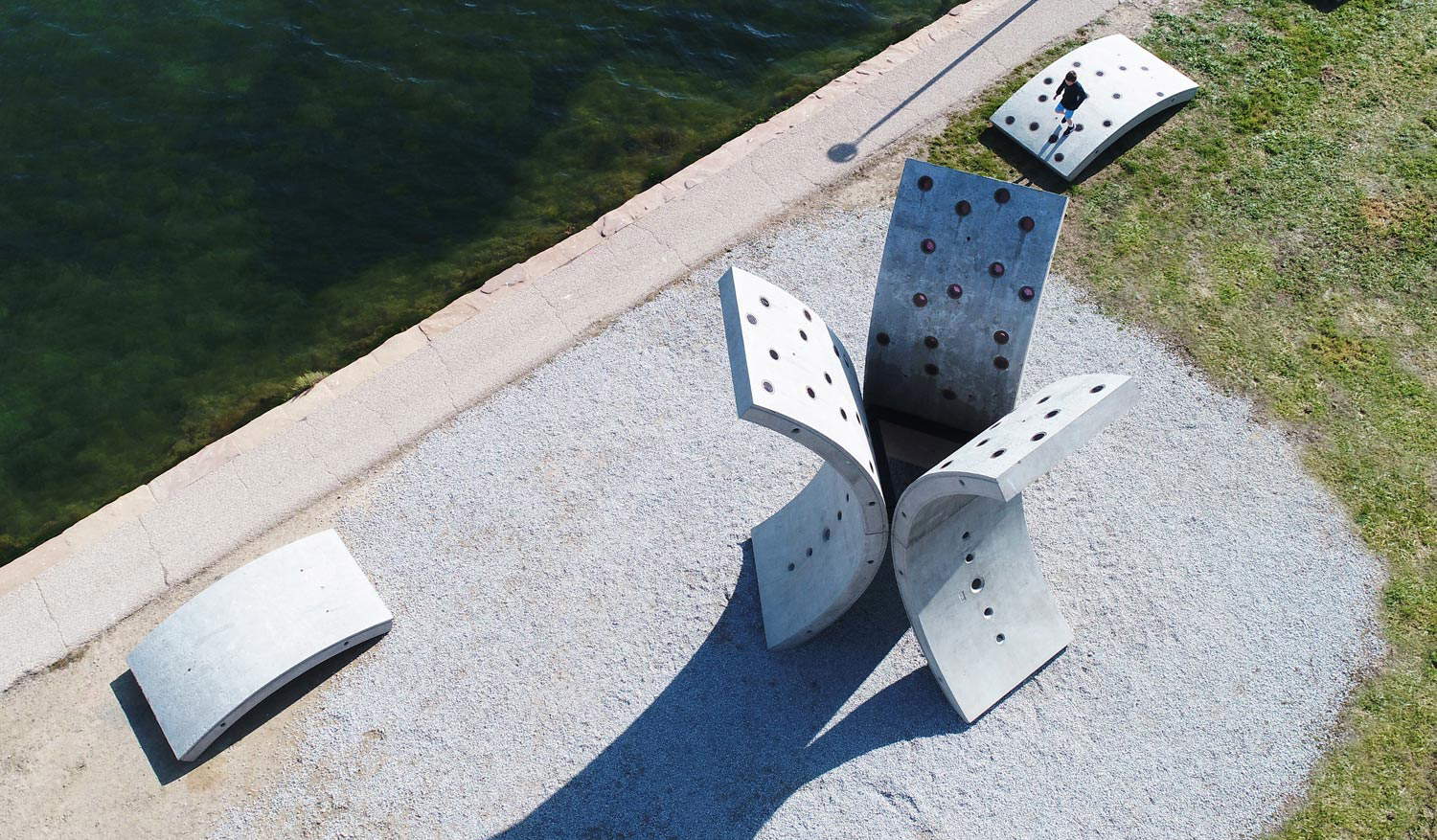
 |
| In Orbetello, Virginia Overton's giant concrete tulip. |
Warning: the translation into English of the original Italian article was created using automatic tools. We undertake to review all articles, but we do not guarantee the total absence of inaccuracies in the translation due to the program. You can find the original by clicking on the ITA button. If you find any mistake,please contact us.




























